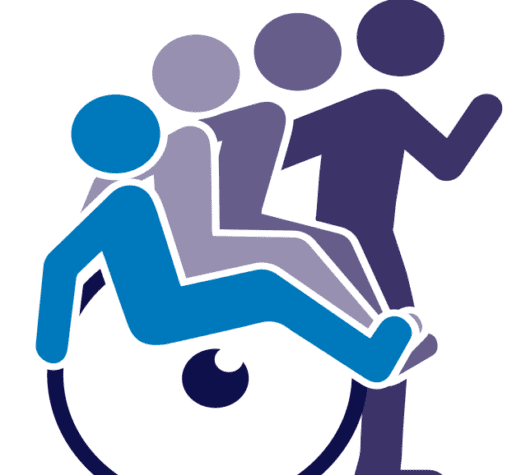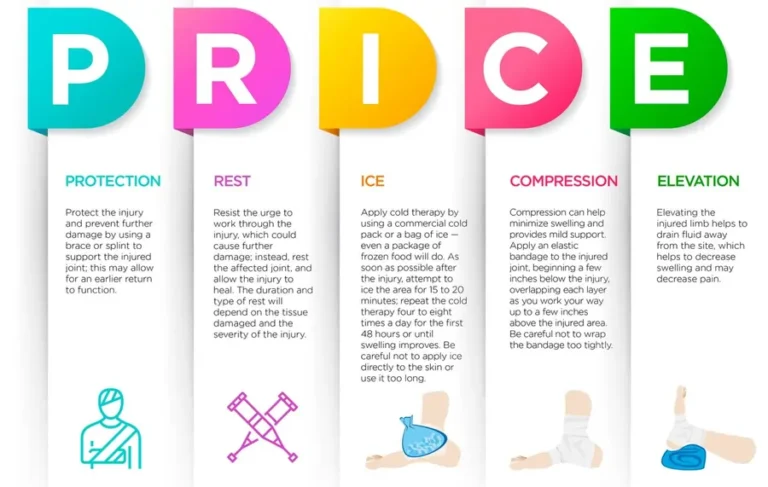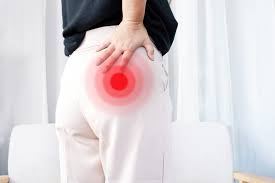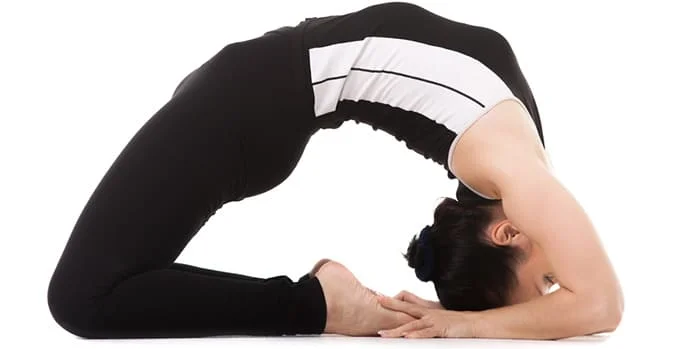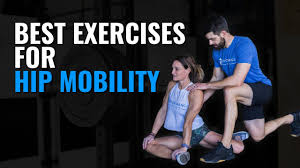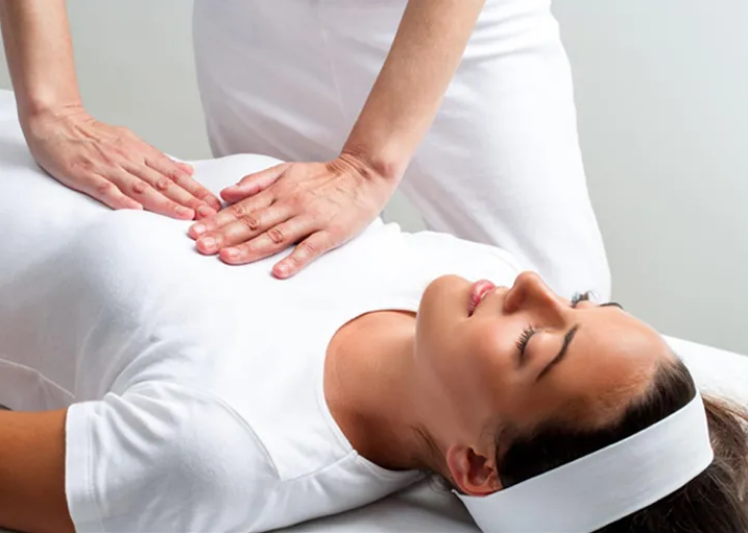Neck Pain Relief While Working At A Desk
Table of Contents
Introduction:
Your neck might suffer from prolonged desk work, which can frequently result in stiffness, irritation, or even chronic pain. The muscles and joints in your neck and shoulders are strained by bad posture, extended screen time, and insufficient breaks.
Neck pain can influence your general well-being in addition to your productivity. Fortunately, you can reduce stress, increase mobility, and keep your neck healthy even throughout lengthy workdays with easy, focused workouts and conscious habits.
Benefits of Neck Pain Relief While Working At A Desk:
- Reduces Muscle Tension: Mild stretches and exercises aid in releasing shoulder and neck tension, avoiding stiffness.
- Improves Posture: Consistent neck care promotes healthy spinal alignment, which lessens forward head posture and slouching.
- Increases Productivity: Having a pain-free neck makes it easier to concentrate and stay comfortable for extended periods of work.
- Prevents Chronic Pain: Regular pain management practices lower the chance of having chronic issues with the neck or upper back.
- Increases Blood Circulation: Stretches and movement enhance blood flow to the neck muscles, which aids in recovery and lessens weariness.
- Headaches: The frequency of tension headaches caused by desk work can be decreased by reducing neck strain.
- Improves Mobility and Flexibility: Maintaining a range of motion and avoiding stiffness requires active neck muscles.
Neck Pain Relief While Working At A Desk Video:
Neck Pain Relief Exercises:
Chin Tucks:
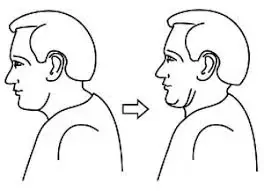
Chin tucks are a great way to improve posture and relieve neck strain, especially for people who work lengthy desk jobs. Sit or stand up straight and keep your shoulders relaxed to execute a chin tuck. Without raising or lowering your head, slowly draw your chin straight back toward your neck in the manner of a “double chin.” After a few seconds of holding this position, slowly release it.
Frequent exercise helps to minimize soreness and stiffness during extended desk work by strengthening the deep neck muscles, easing cervical spine strain, promoting general neck stability, and correcting forward head position.
Upper Trapezius Stretch:
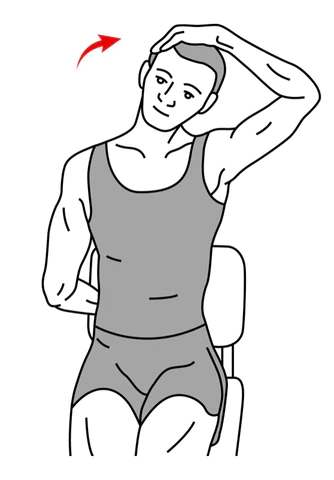
The upper trapezius stretch aids in releasing shoulder and neck strain, which frequently builds up after extended desk labor. Sit or stand upright with your back straight to complete this stretch. Keep the other shoulder down and relaxed as you gently tilt your head to one side, bringing your ear toward your shoulder.
If it feels comfortable, you can apply light pressure with your hand to achieve a deeper stretch. After 15 to 30 seconds of holding the position, switch sides. This stretch increases general shoulder and neck mobility, eases tense muscles, and lessens stiff necks.
Levator Scapulae Stretch:
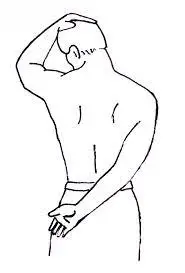
The muscle that runs down the back and side of your neck, which frequently gets tight from spending a lot of time at a desk, is the goal of the levator scapulae stretch. Sit or stand up straight and move your head gently 45 degrees to one side to complete this stretch. Then, as though gazing into your armpit, softly incline your chin down toward your chest.
For a more thorough stretch, you might gently press on the back of your head with your palm. After 15 to 30 seconds of holding, switch sides. This stretch enhances general neck mobility, eases shoulder stress, and relieves stiff necks.
Scapular Squeezes:
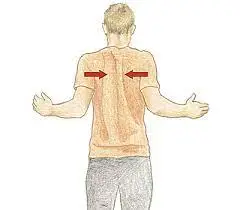
A quick and easy way to improve posture and ease strain in your neck and upper back is to perform scapular squeezes, which strengthen the muscles between your shoulder blades. Sit or stand with your shoulders relaxed and your back straight to perform them. Imagine holding a tiny object between your shoulder blades while you gently squeeze them together.
Release the contraction gradually after holding it for 5–10 seconds. Do this multiple times. Regularly performing scapular squeezes promotes a more upright posture during extended desk work, relieves upper back tension, and corrects rounded shoulders.
Wall Angels:
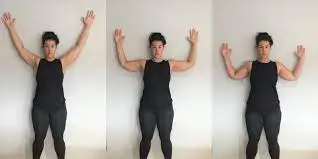
Wall angels are a great way to strengthen your upper back muscles, increase shoulder mobility, and enhance your posture. Stand with your feet a few inches from the wall, your lower back slightly pressed toward the wall, and your back against the wall to perform wall angels. With your elbows bent at a 90-degree angle, place your arms in a “goalpost” position against the wall.
Maintaining your arms, shoulders, and back in touch with the wall, slowly glide your arms upward as though creating a snow angel, then lower them back down. Do this multiple times. This exercise improves overall upper body alignment, corrects rounded shoulders, and eases tension in the neck and shoulders.
Conclusion:
Although neck pain from extended desk work is a widespread problem, it may be easily controlled and avoided with regular stretches and exercises. Including exercises like wall angels, levator scapulae stretches, chin tucks, upper trapezius stretches, and scapular squeezes in your daily routine will assist in preserving neck and shoulder mobility, release stress in your muscles, and improve posture.
You may improve focus, productivity, and general well-being while working at a desk by performing these exercises during brief pauses.
FAQs
This method includes inserting tiny needles into the skin to lessen or completely eradicate pain and increase cervical spine mobility. Chinese acupuncture is frequently used to treat issues like muscle tightness and whiplash.
Although it can develop anywhere on the spine, arthritis is more common in the neck and lower back. The two most prevalent signs of spine arthritis are pain and stiffness.
Indeed, a lack of vitamin B12 can result in neck pain, frequently as a complication of a neurological condition such as cervical radiculopathy or myelopathy, which includes compression of the nerves. The myelin sheath of nerves is impacted by the deficiency, which can cause symptoms like tingling, pain, weakness, numbness, and arm and neck spasms.
In general, a medical evaluation is necessary for any neck pain that persists for more than a few days. In addition to offering much-needed symptom relief, an evaluation is crucial for figuring out whether the cause is worsening and how to treat it to avoid more issues.
Managing chronic back and neck pain, as well as muscle spasms, requires addressing vitamin D deficiency or insufficiency. A more thorough investigation is necessary because the mechanism underlying this relationship is yet unclear.
Sharp or scorching pain that travels down the arm, a tingling or “pins and needles” sensation, numbness, and weakness in the hand or arm are all signs of a pinched nerve in the neck. Certain neck motions may make the pain worse, and some individuals find that putting a hand on their head helps them feel better. Get medical help right away if you have bowel or bladder changes, a fever, balance problems, or new or worsening weakness, numbness, or tingling.
The following are some typical ways that dehydration impacts the neck: Disc Stiffness and Reduced Movement: As discs dry out, they become inflexible, which limits the spine’s natural flexibility. This frequently results in neck stiffness.
Because it may indicate nerve or spinal cord compression from disorders, including a pinched nerve, herniated disc, or degeneration, neck pain accompanied by neurological symptoms like numbness, tingling, weakness, or lack of coordination needs to be treated very carefully. These symptoms, which include referred pain, altered sensations, or motor deficiencies in the arms, hands, or legs, are caused by pressure on the nerves or spinal cord. Physical examinations, imaging, medication, physical therapy, and occasionally surgery are used by doctors to diagnose and treat various diseases.
Severe ache over or close to the shoulder blade, or pain when you move your neck. Additionally, you can experience numbness throughout your shoulder, elbow, forearm, and fingers, as well as pain that radiates to your upper arm, forearm, and fingers. These are typical signs and symptoms of a slipped disc in the neck.
Get medical help right away if you have neck pain from an injury, fever, and a really bad headache, or if you have symptoms like difficulty moving, numbness or paralysis in your limbs, loss of control over your bladder or bowel, or unexplained weight loss. If your pain is severe, ongoing, doesn’t go away with self-care, or radiates down your arms or legs, get in touch with a healthcare professional.
Neck pain can be treated with radiofrequency ablation. A technique called radiofrequency ablation uses heat from high-energy electromagnetic waves to kill pain-sensing neurons.
Using a travel neck cushion to maintain appropriate spinal alignment might help delay the onset of pain and even foster a more comfortable and effective work environment. Additionally, a comfy workplace lowers stress levels, which enhances general well-being.
Use a combination of heat and ice therapy to relieve neck pain right away. Try mild stretching or massage, and use cold packs for the first 48 hours before using heat to relax the muscles. Ibuprofen and other over-the-counter painkillers can also help reduce inflammation and pain. Neck strain can also be avoided and lessened by adjusting your posture and taking brief rests when sitting for extended periods of time.
Text neck syndrome and other repetitive stress injuries can result from spending too much time looking down at computers, tablets, phones, and other electronic devices. The neck and upper spine are overworked when the head tilts forward at an excessive angle, which can lead to pain and long-term issues.
Constantly staring down at laptops, tablets, cellphones, and other electronic gadgets can lead to repetitive stress injuries like text neck syndrome. The head tilting forward at an abnormal angle puts undue strain on the neck and upper spine, causing pain and long-term problems.
Sitting at a desk for hours on end can hurt one’s health, even while hard work may pay off in the workplace. In the image above, Ruth Gronde, an ergonomic therapist with Piedmont, shows a typical workstation configuration that can cause issues with the wrist, shoulders, back, and neck.
References:
- Lambrou, D. (2025, February 21). 11 tips for getting rid of tech neck | Northeast Spine and Sports Medicine. Northeast Spine and Sports Medicine. https://www.northeastspineandsports.com/blog/11-tips-for-getting-rid-of-tech-neck-northeast-spine-and-sports-medicine/
- 7 easy ways of reducing neck pain while studying or working. (n.d.). https://www.fixhealth.com/blogs/7-easy-ways-of-reducing-neck-pain-while-studying-or-working
- Darivemula, S. B., Goswami, K., Gupta, S. K., Salve, H., Singh, U., & Goswami, A. K. (2015). Work-related neck pain among desk job workers of a tertiary care hospital in New Delhi, India: Burden and determinants. Indian Journal of Community Medicine, 41(1), 50. https://doi.org/10.4103/0970-0218.170967
- Flayton, L. (2025, August 9). How to prevent and fix ‘Tech Neck.’ NewYork-Presbyterian. https://healthmatters.nyp.org/how-to-prevent-tech-neck/
